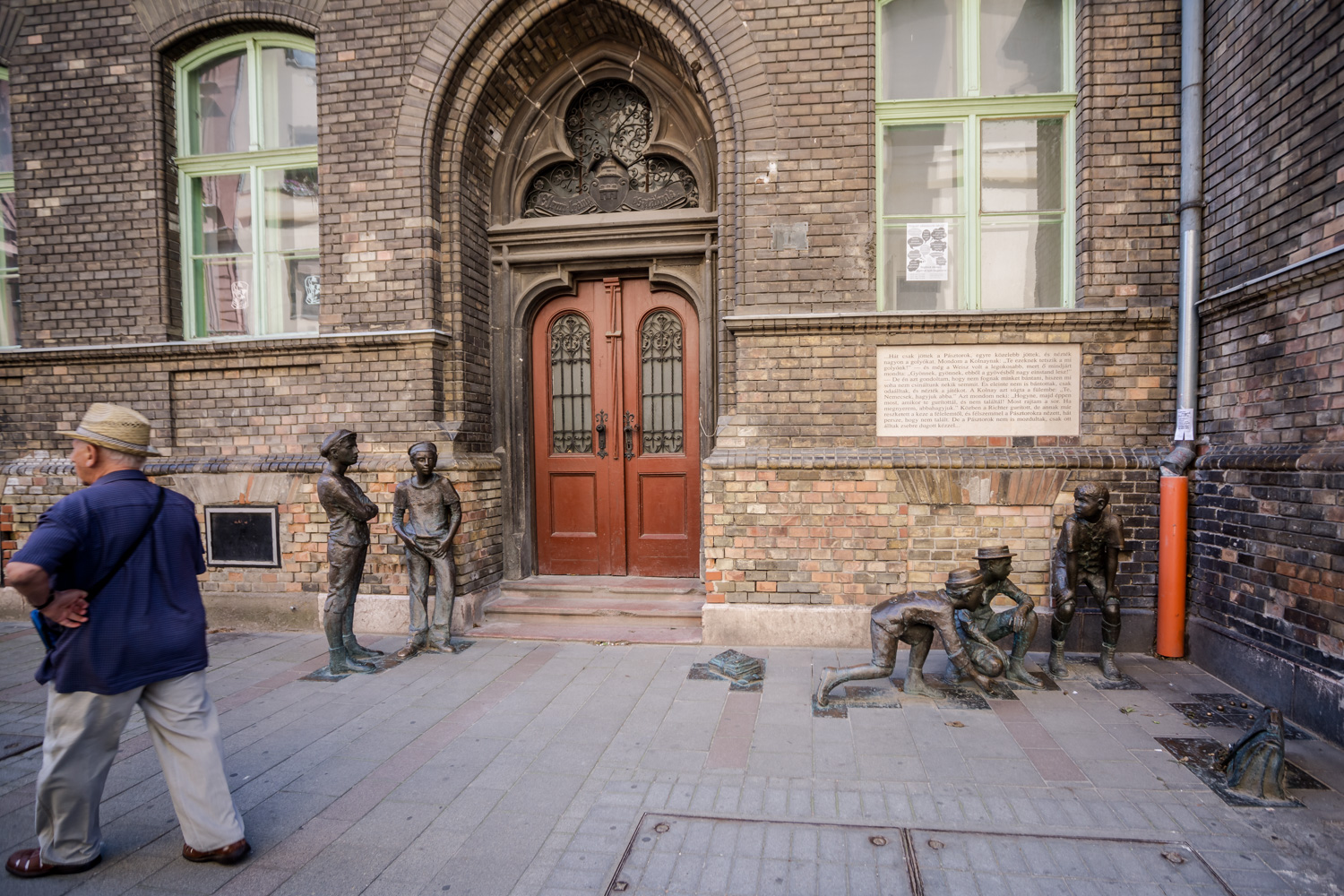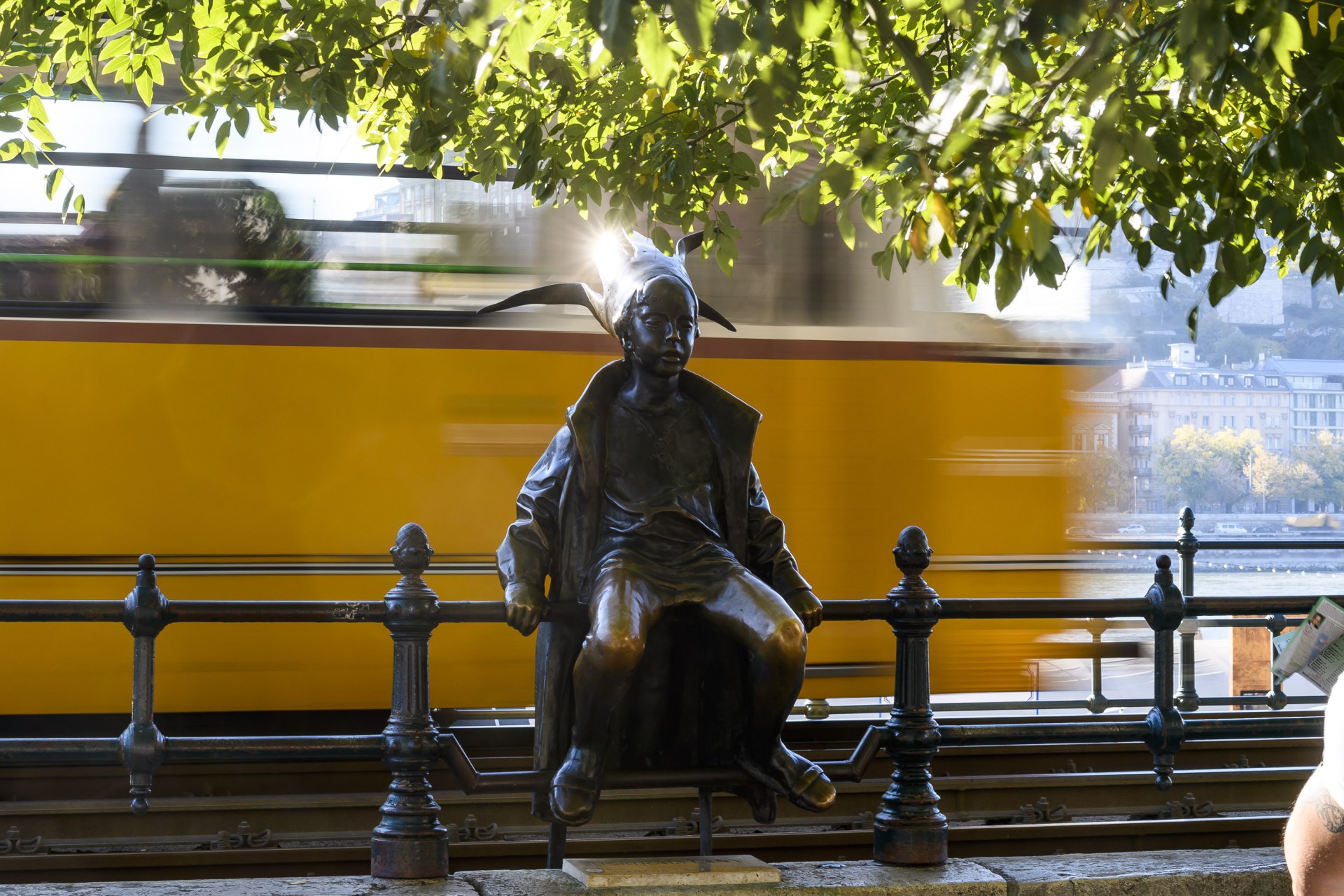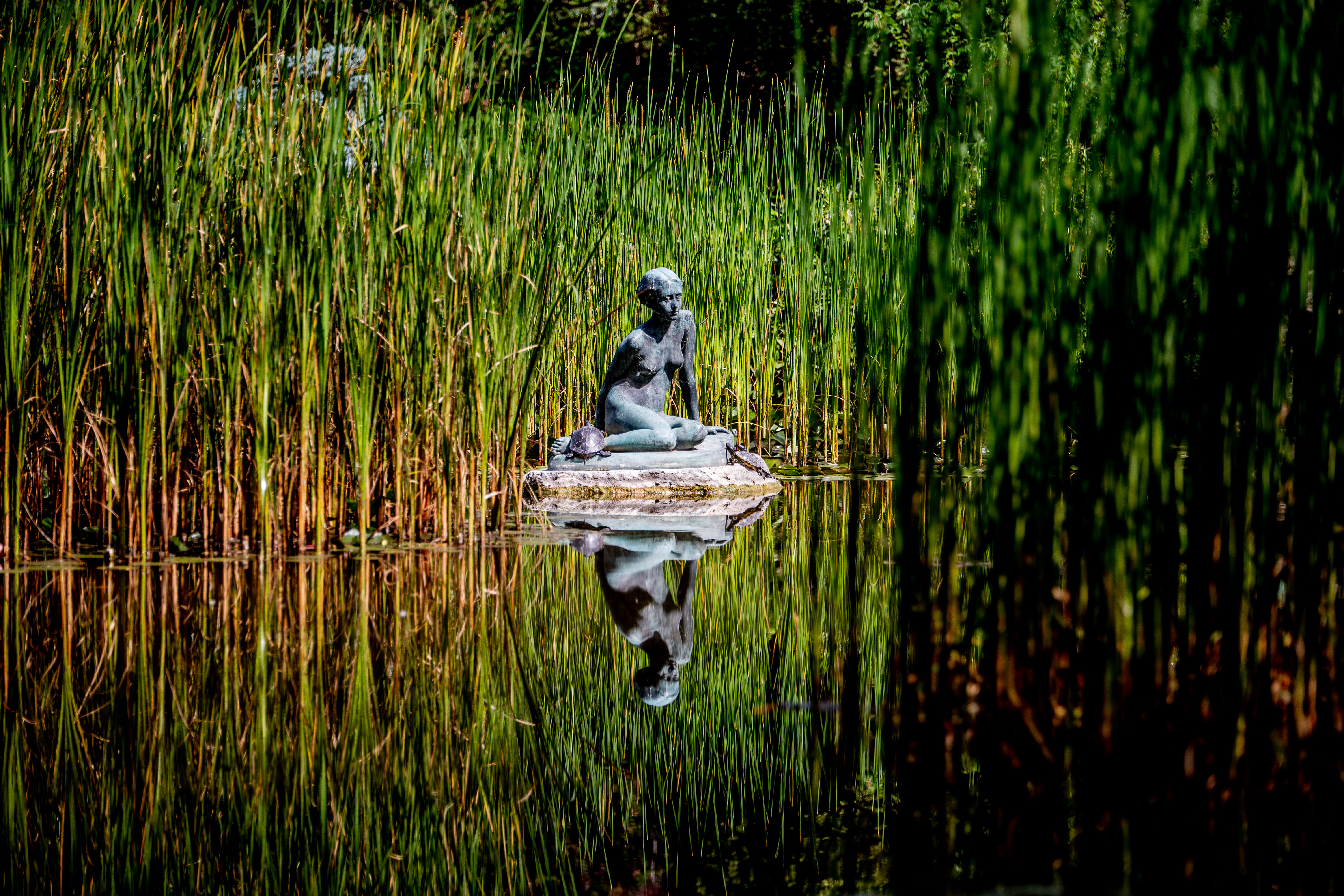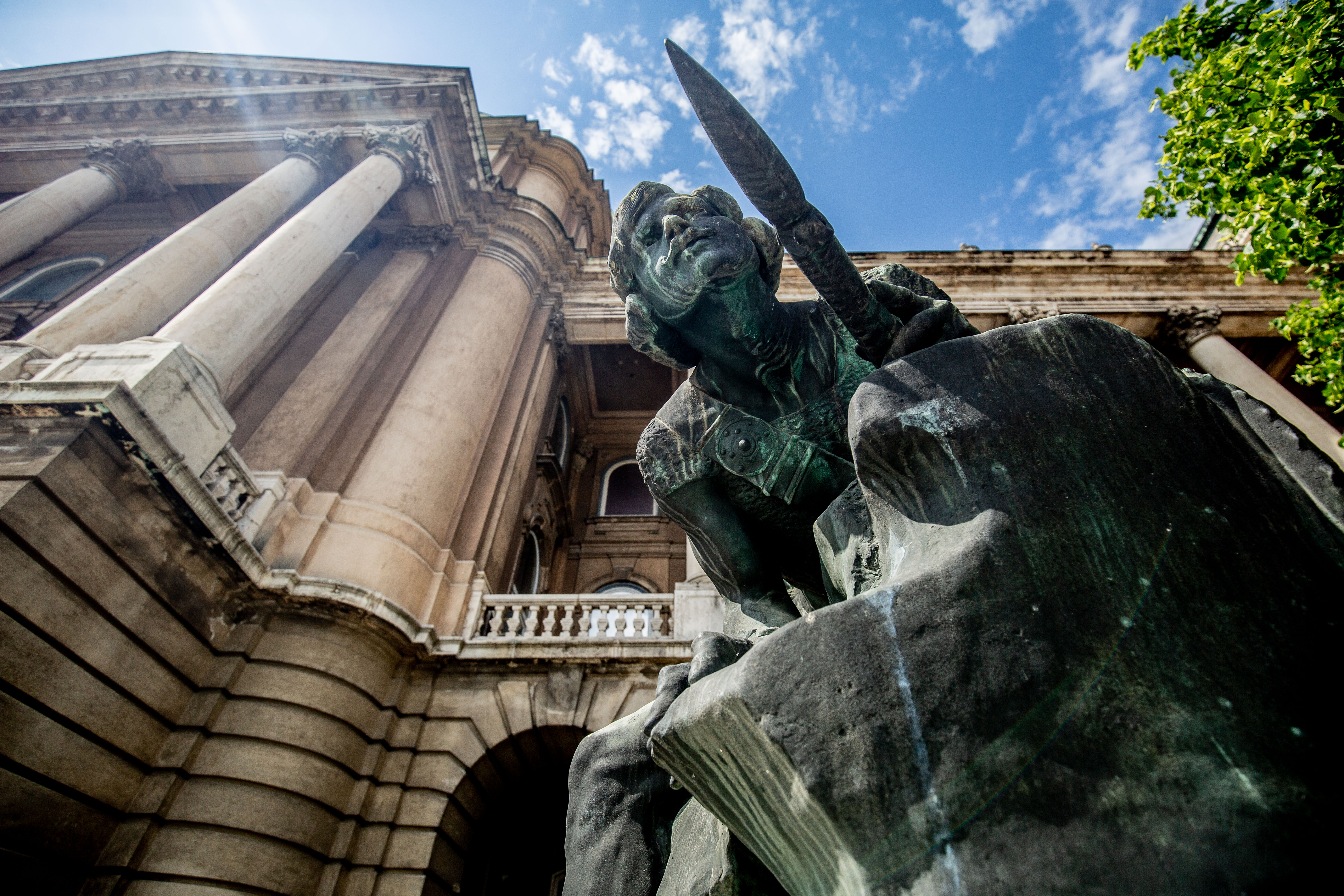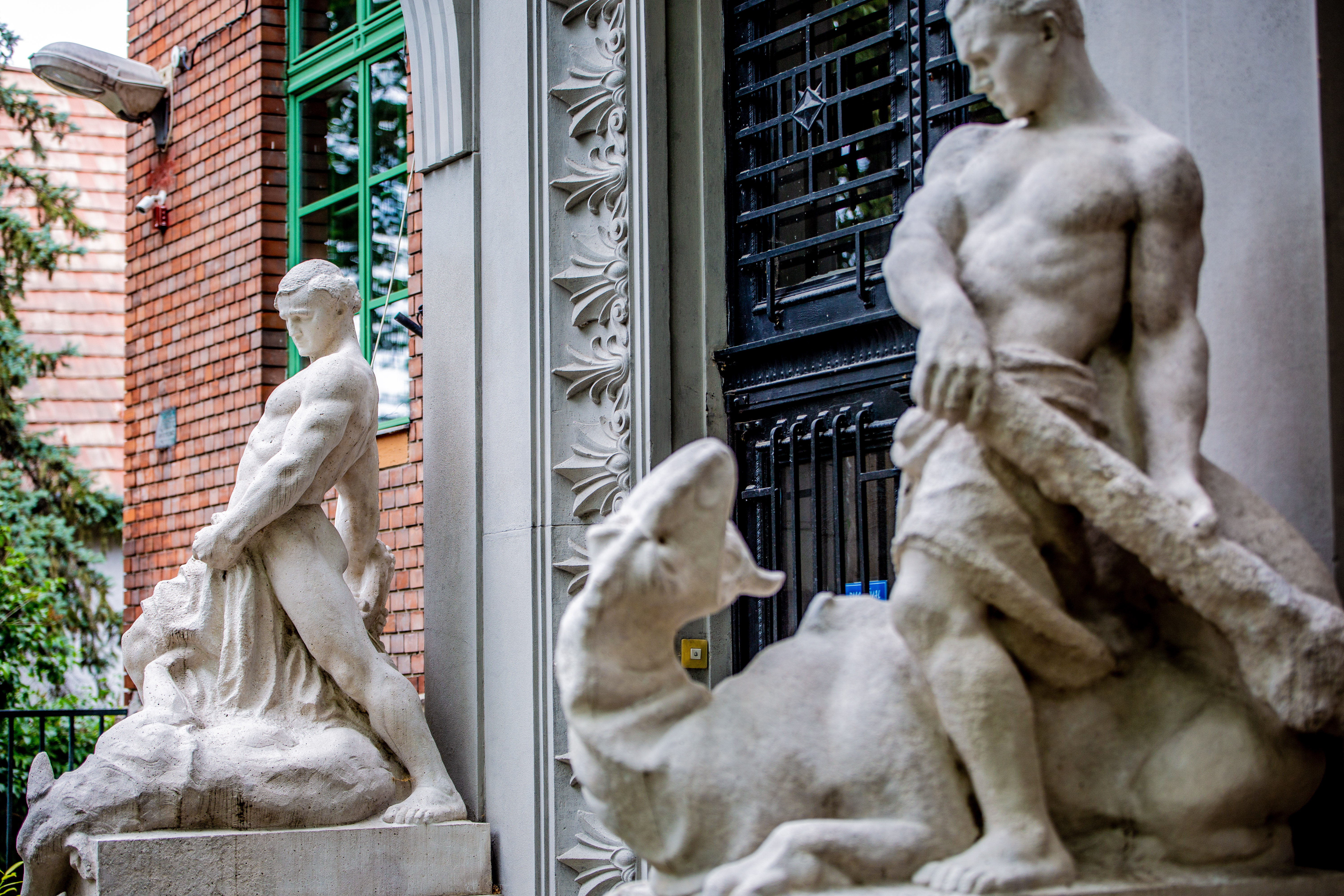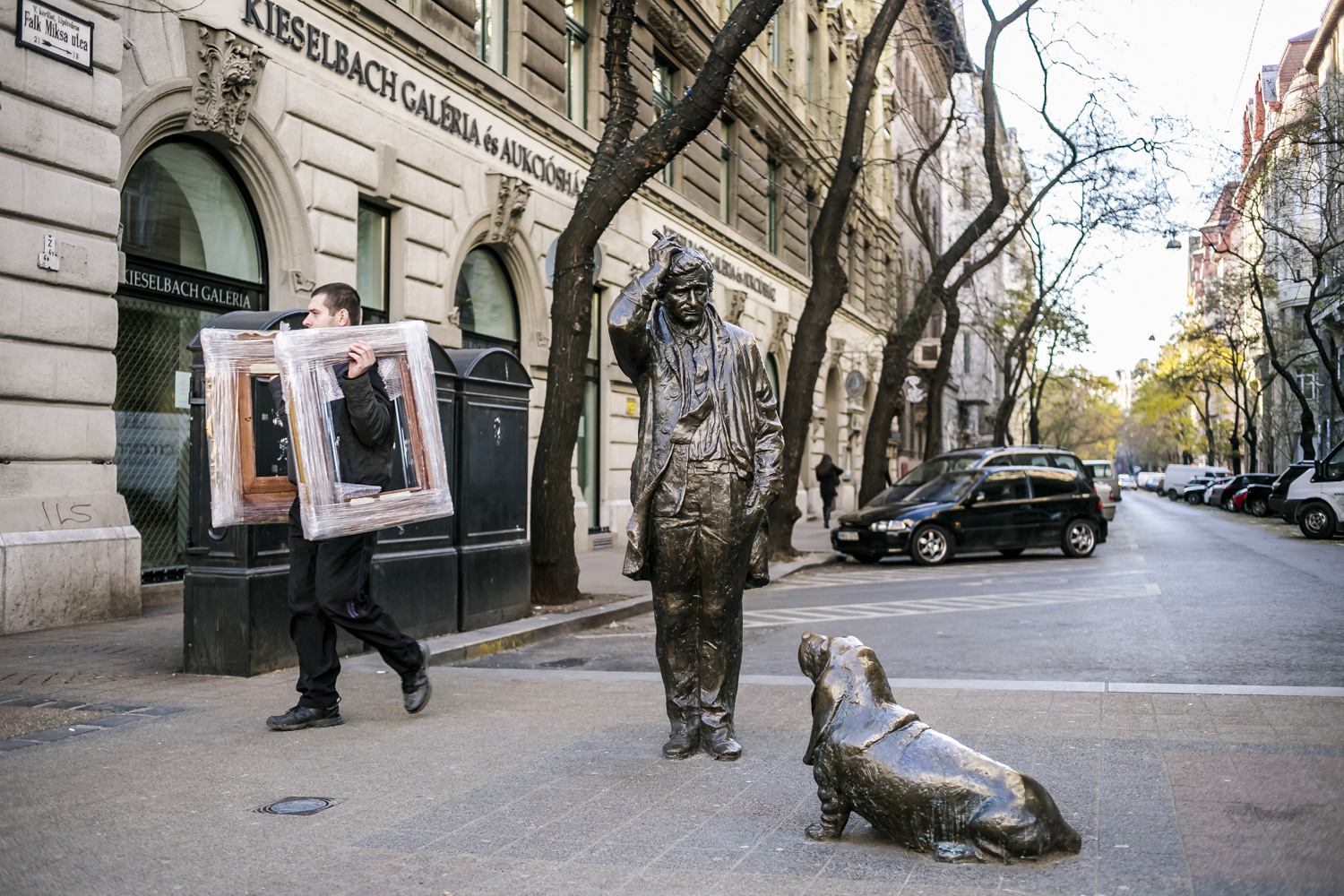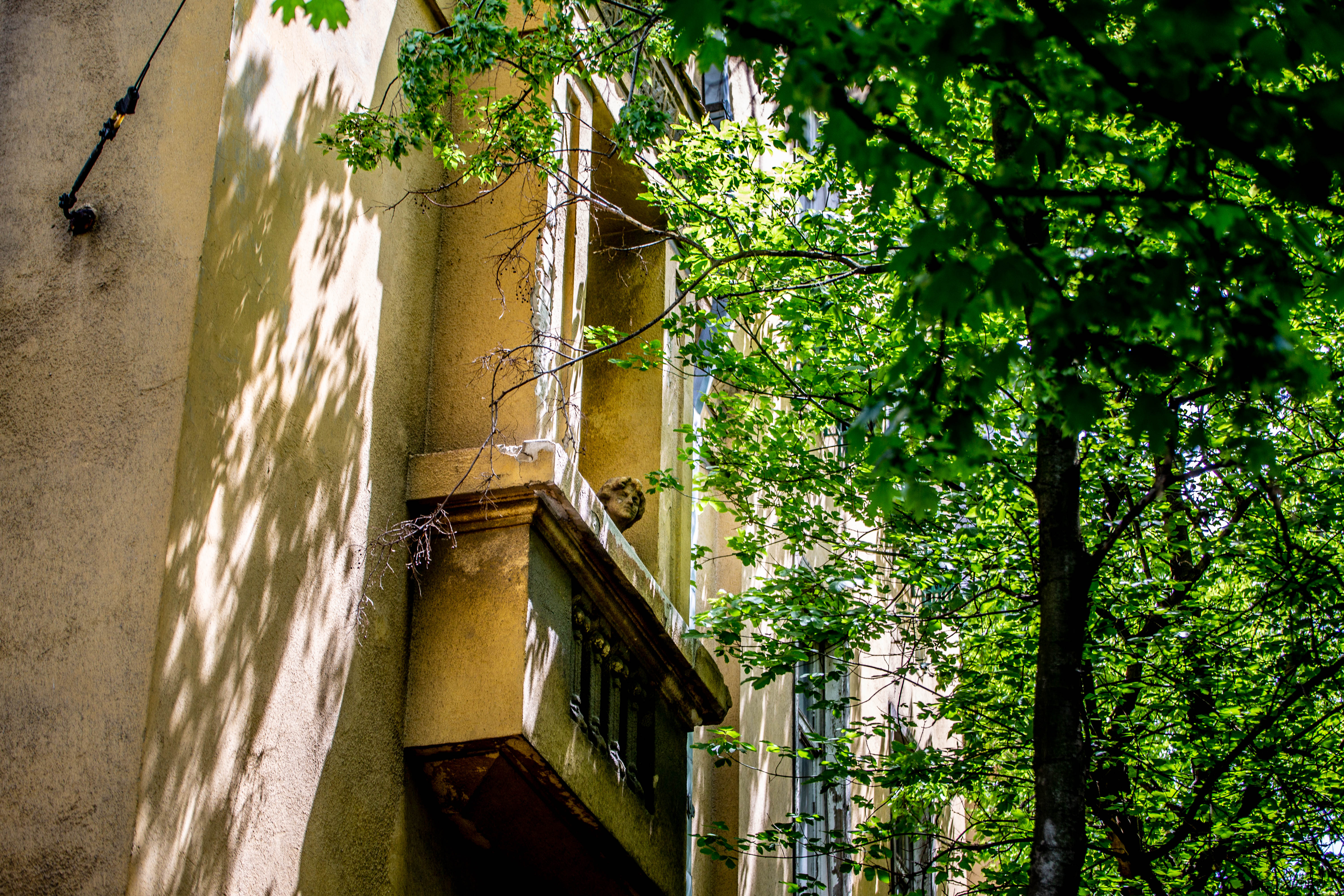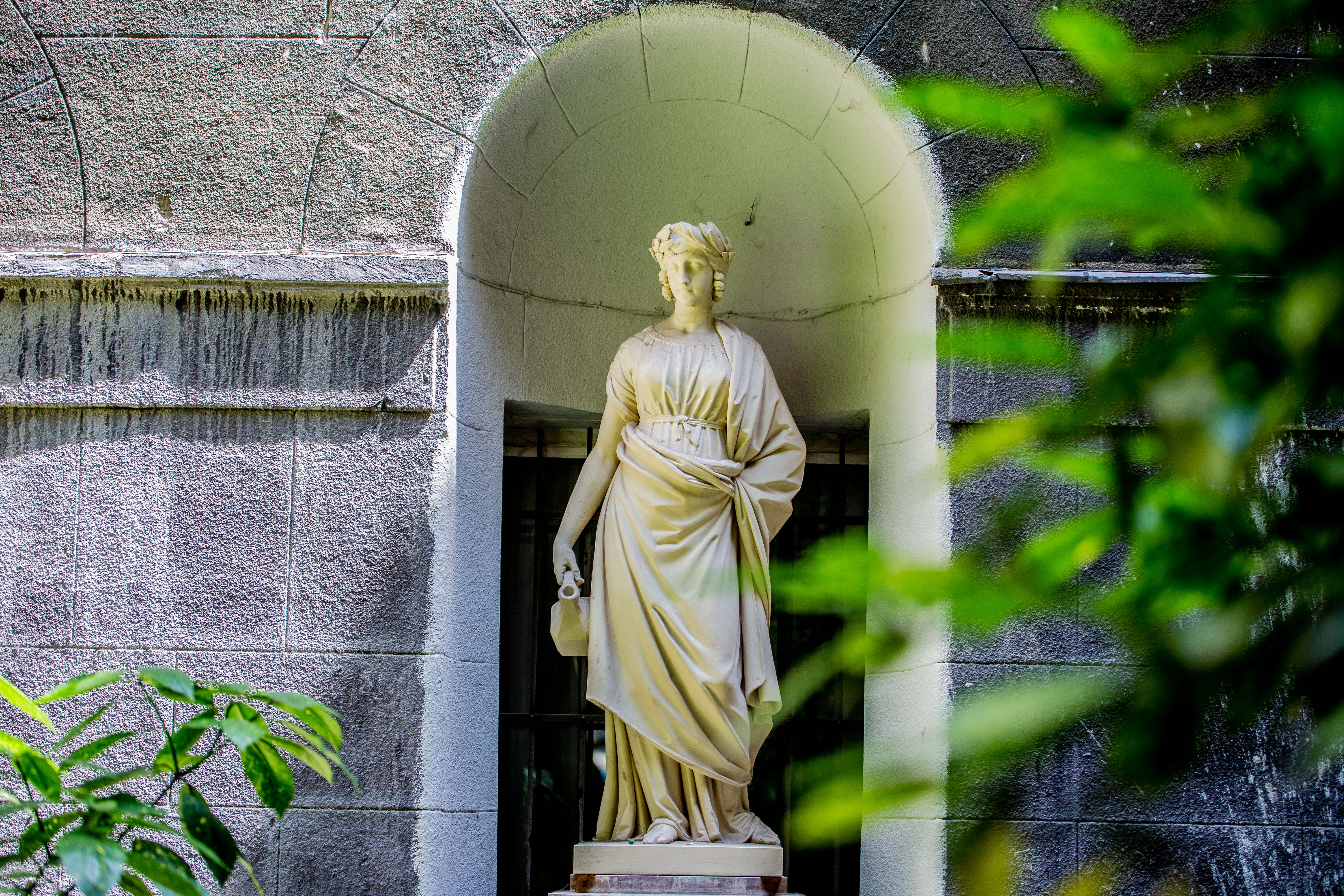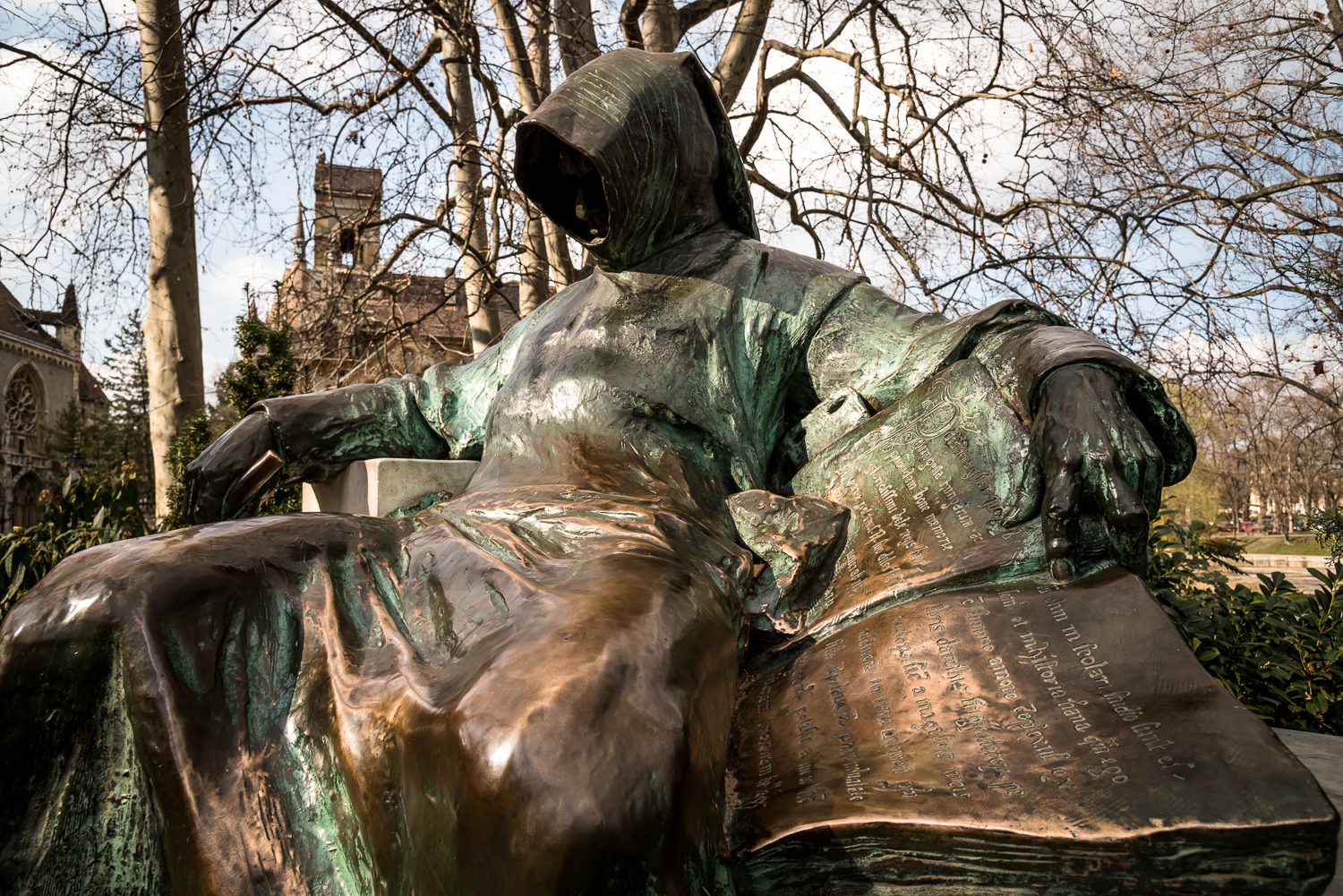Budapest is a city replete with statues. Alongside the traditional poses of heroes on horseback, many others are funny, unique or come with an interesting backstory. From the mighty to the tiny, we feature ten statues in Budapest which break from the mould.
1/10
Hüvelyk Matyi
Located within Városmajor park, a fairy-tale hero can be spotted hiding in a corner of the greenery. Sculptor Ede Telcs installed the piece here in 1932, only for it to be moved 20 years later to the Amusement Park. It was returned to its original location in the 1980s, where it remains today. There was a bronze copy installed in Baja, the sculptor’s home town, where it was remade of stone in 2007.
2/10
The Pál utca boys
Characters from a popular Hungarian children's story can be seen playing marbles in front of the school on Práter utca in District VIII. The installation was created to celebrate the book’s centenary, and shows the opening scene from Ferenc Molnár's tale.
3/10
The little princess
This iconic statue sits along the Danube Promenade, a symbol of downtown Budapest, but some may not know that this is actually its fourth iteration. The original, 50-cm statue was created by László Marton in 1972, and is on display at the National Gallery. In 1990, the life-size version on the Danube Promenade was inaugurated, a duplicate of which resides in Tapolca, the artist’s home town. Yet another can be found in the Tokyo Metropolitan Art Space in Japan, in front of the concert hall of the cultural centre. This one was donated by László himself. The model for the statue was none other than László’s daughter from his first marriage, who loved dressing up as a princess, and inspired the sculptor to create the piece.
4/10
The sitting girl
This statue by Imre Csikász has been reclining in the fish pond of Margaret Island’s Japanese Garden since 1954. The one we see today is a copy of the original, which was made in 1911 and currently resides in the Kiscelli Museum. The figure is reminiscent of the Little Mermaid statue in Copenhagen, which leads many viewers to believe the girl here is a mermaid, too. However, if you look closely, you’ll see she has legs, and not fins.
5/10
Csongor and Tünde
The poem by Mihály Vörösmarty is the inspiration for this next piece, which shows two lovers from the tale standing near each other on the east side of Buda Castle. The statues were created by Miklós Ligeti, and installed in 1903, although they originally were located by the steps leading up to the Castle Gardens. They sustained damage during World War II and were renovated in 1976, when they were also moved to their current location.
6/10
János the Knight and Toldi
Located on the Danube side of Csillaghegy, these two statues stand outside the doors of the primary school on Keve utca. They were made in 1929, carved by János Horvay out of limestone, and represent two characters from another classic work of fiction. The valiant János the Knight stands triumphant over the defeated dragon, while Miklós Toldi is locked in battle against wolves.
7/10
Columbo
Peter Falk was honoured in 2014 with a statue in the city centre, which shows the popular American actor in his most famous role as Columbo the detective. He appears deep in thought, scratching his head, while his trusty canine companion looks up at him from the ground. And why was the statue created? According to legend, Peter Falk was born to Russian and Eastern European immigrants, who named him after his famous Hungarian great-grandfather, an esteemed journalist. However, after the statue was created, the chief researcher of the Budapest City Archives, Gabriella Csiffáry, did some investigation of her own and discovered that there was actually no connection between the Peter Falk the actor and Peter Falk the journalist. In fact, Falk wasn’t even the family name of his ancestors – instead, they were the Hochhausers.
8/10
The mysterious female figure
Peeking over the balcony at Thököly út 61, a mysterious female statue can be spotted by those with a keen eye. This woman’s figure, just out of reach, was for a long time associated with a local urban legend. During World War I, there lived a woman here with her husband. Not long after he left for the front, the woman received word of her husband’s death, but she didn’t believe it. Every day she would stand out on the balcony, waiting and watching for her husband, who never returned. In time, the woman fell ill with the Spanish flu and died. Of course, this is when her husband returned home, and touched by his wife’s devotion, erected the statue in honour of her and her vigil. Unfortunately though, this is this is only a nice story. In truth, the villa was designed by the nephew of famed architect Miklós Ybl, Lajos, and the female figure is only a nice, decorative element.
9/10
The girl with the jug
This statue by Lőrinc Dunaiszky from 1814 stands in the courtyard of a grand classical building at Október 6 utca 19. No one knows where it stood originally, as the building was only completed in 1844, according to plans by József Hild of Basilica fame. It is said to have miraculous powers, and the jug is said to be full of tiny sticky notes on which hopeful pilgrims have scribbled wishes. The statue was also featured in a TV series made in the 1970s, based on Magda Szabó 's novel Abigél, wherein the protagonist, Georgina Vitay, hides secret messages.
10/10
Anonymous
The Anonymous statue outside Vajdahunyad Castle is mysterious indeed, featuring the veiled face of a seated man, brooding, his cloak arrayed around him. People have long speculated who the figure beneath the cloak might represent – but, fittingly, we don’t know for certain. The statue also faced some difficulties during its construction – his seated pose, the placement of his hands and the faceless visage were all controversial. Sculptor Miklós Ligeti gave in and created a version with a face, but ultimately the original hooded version prevailed. The statue is also said to bring good luck to any writer who touches the pen in its hand.
